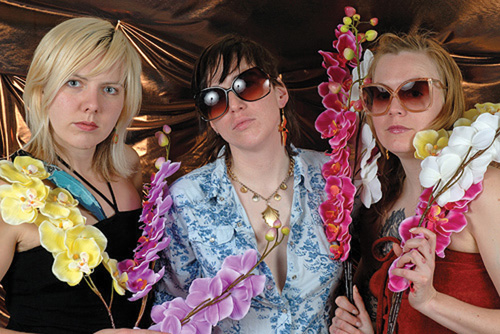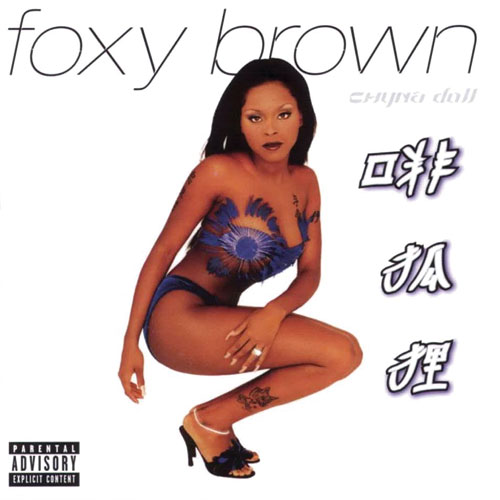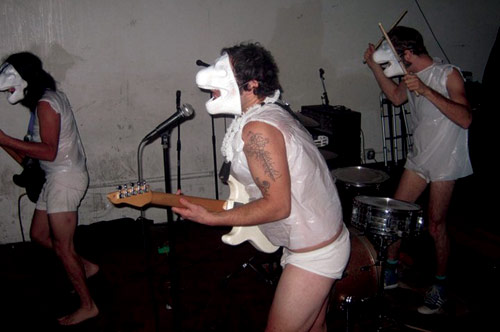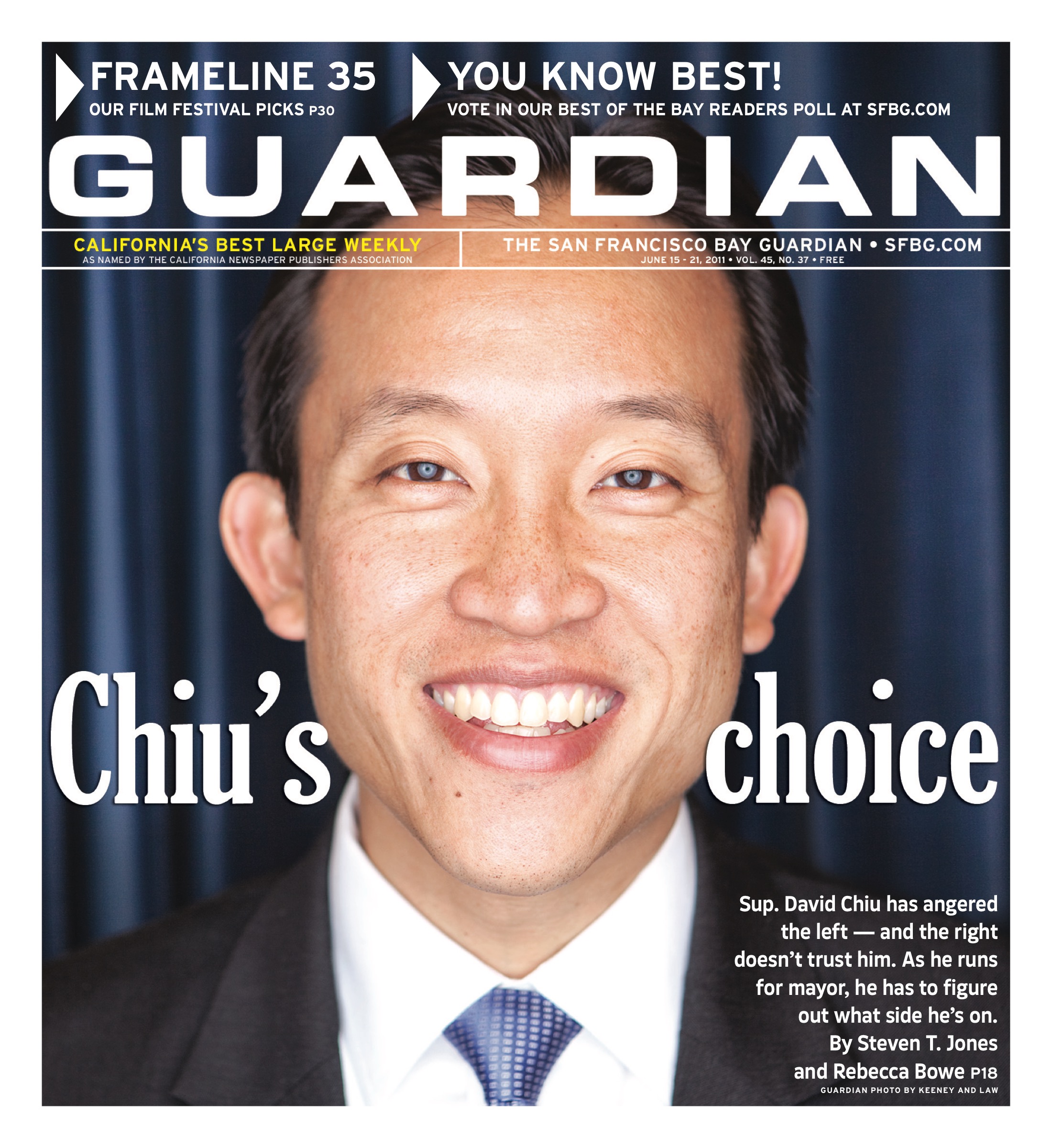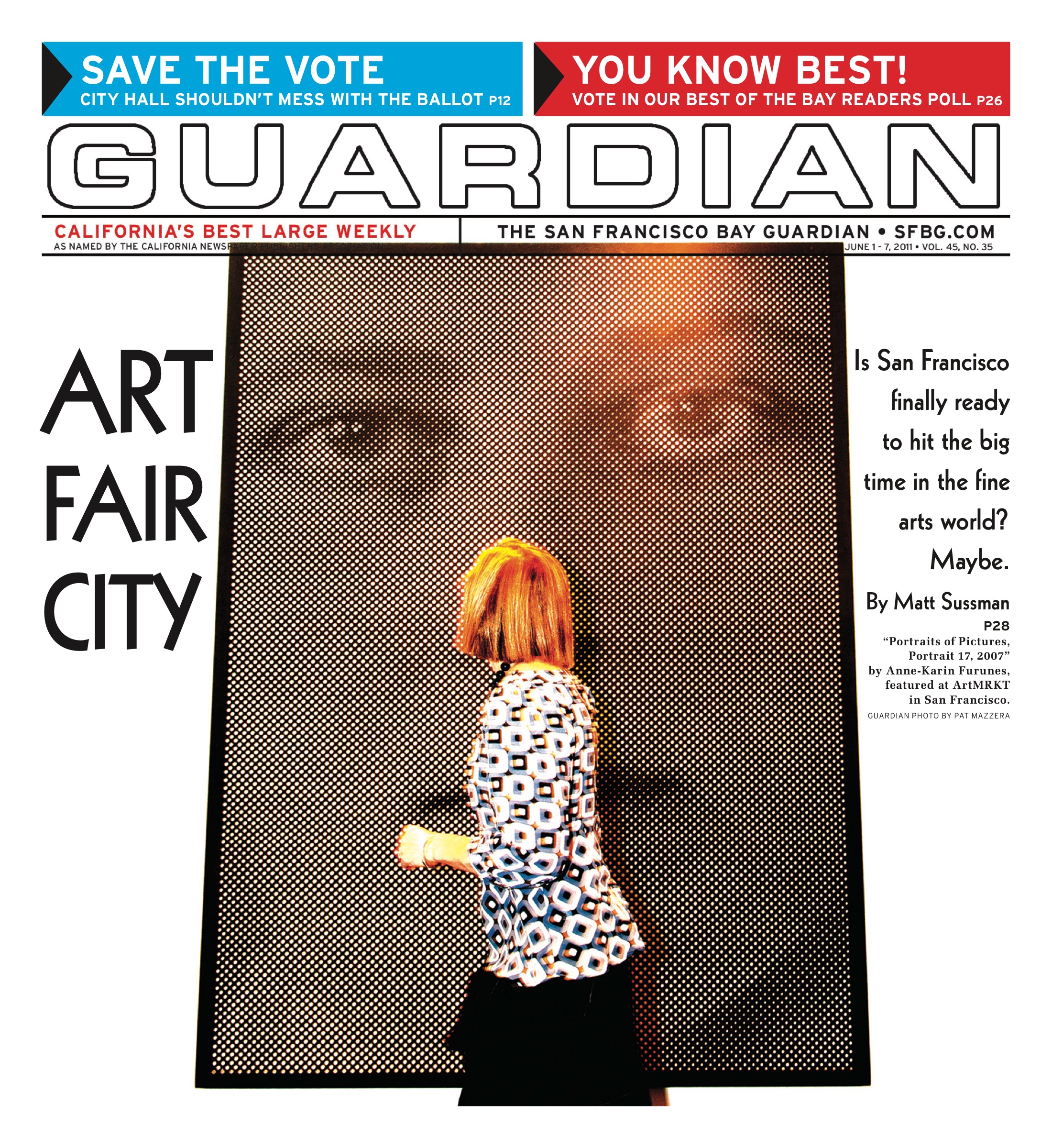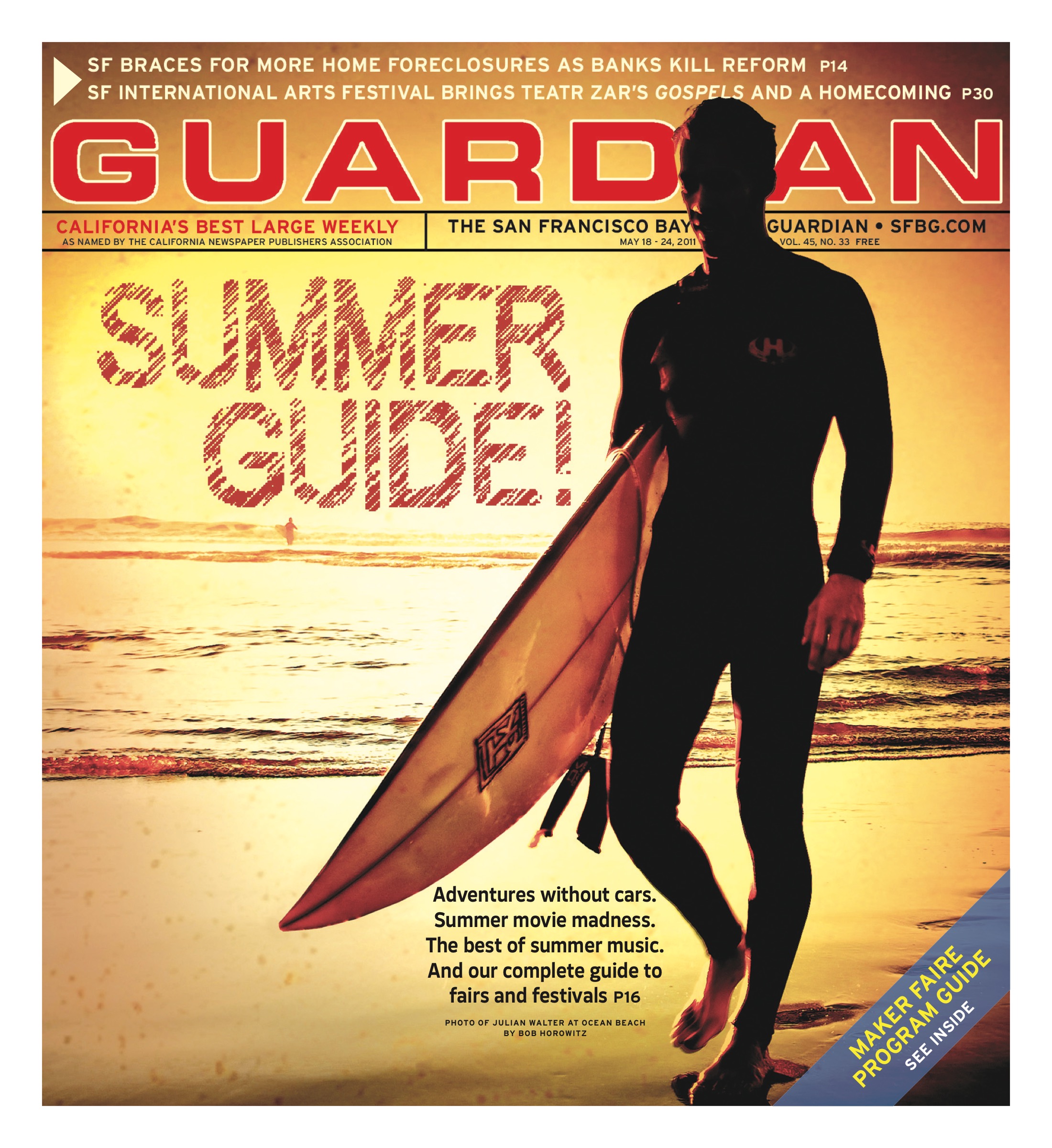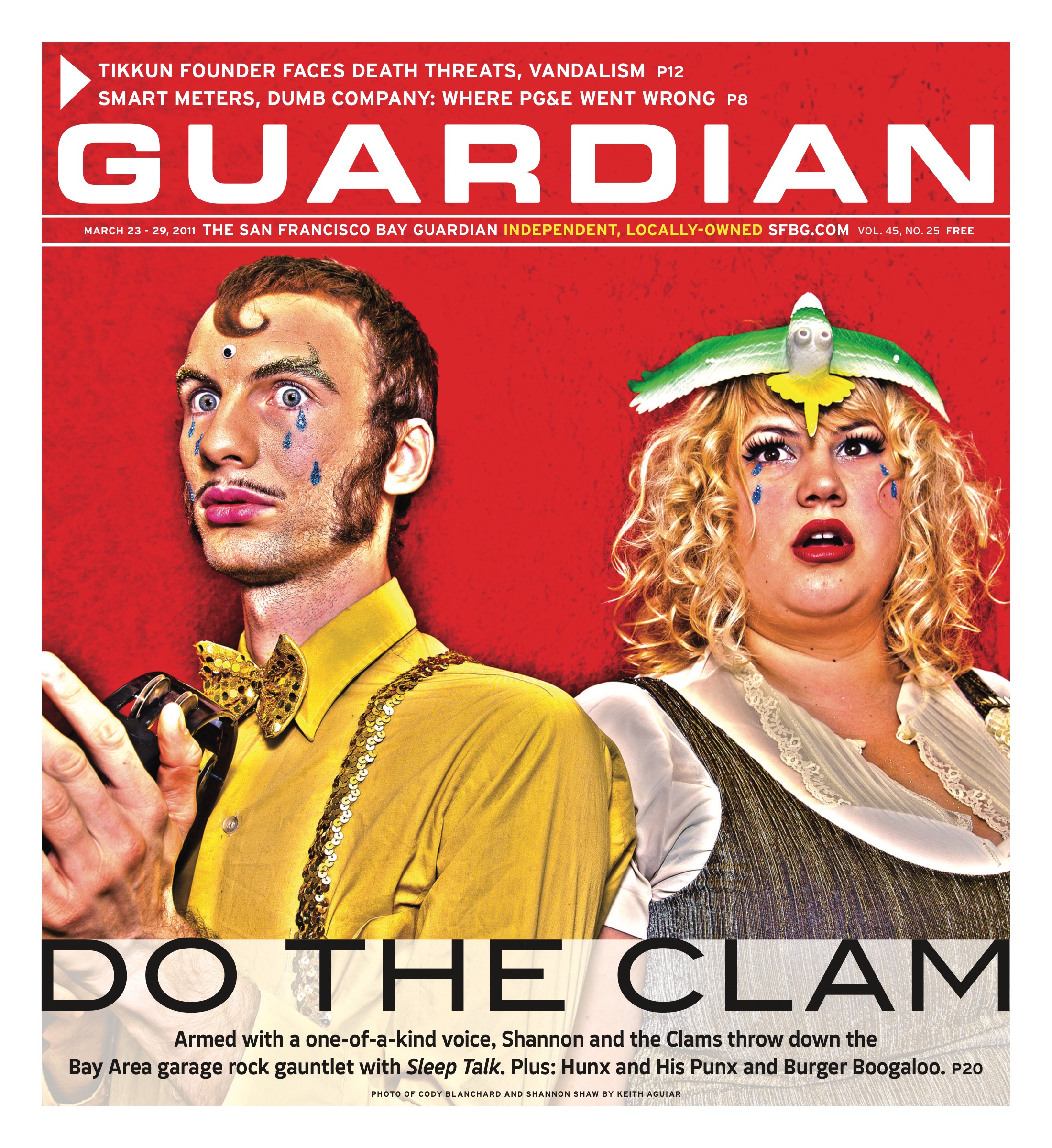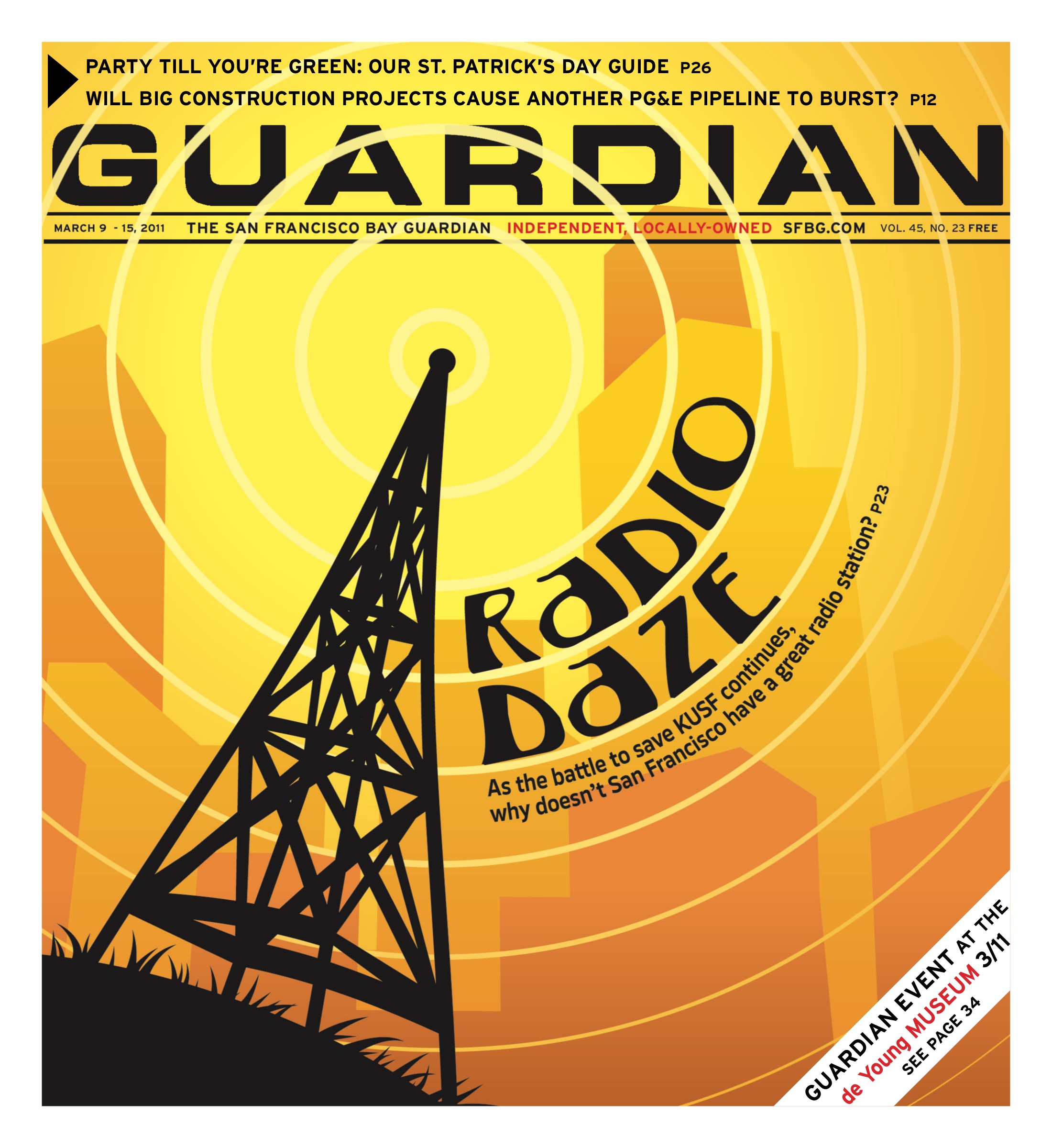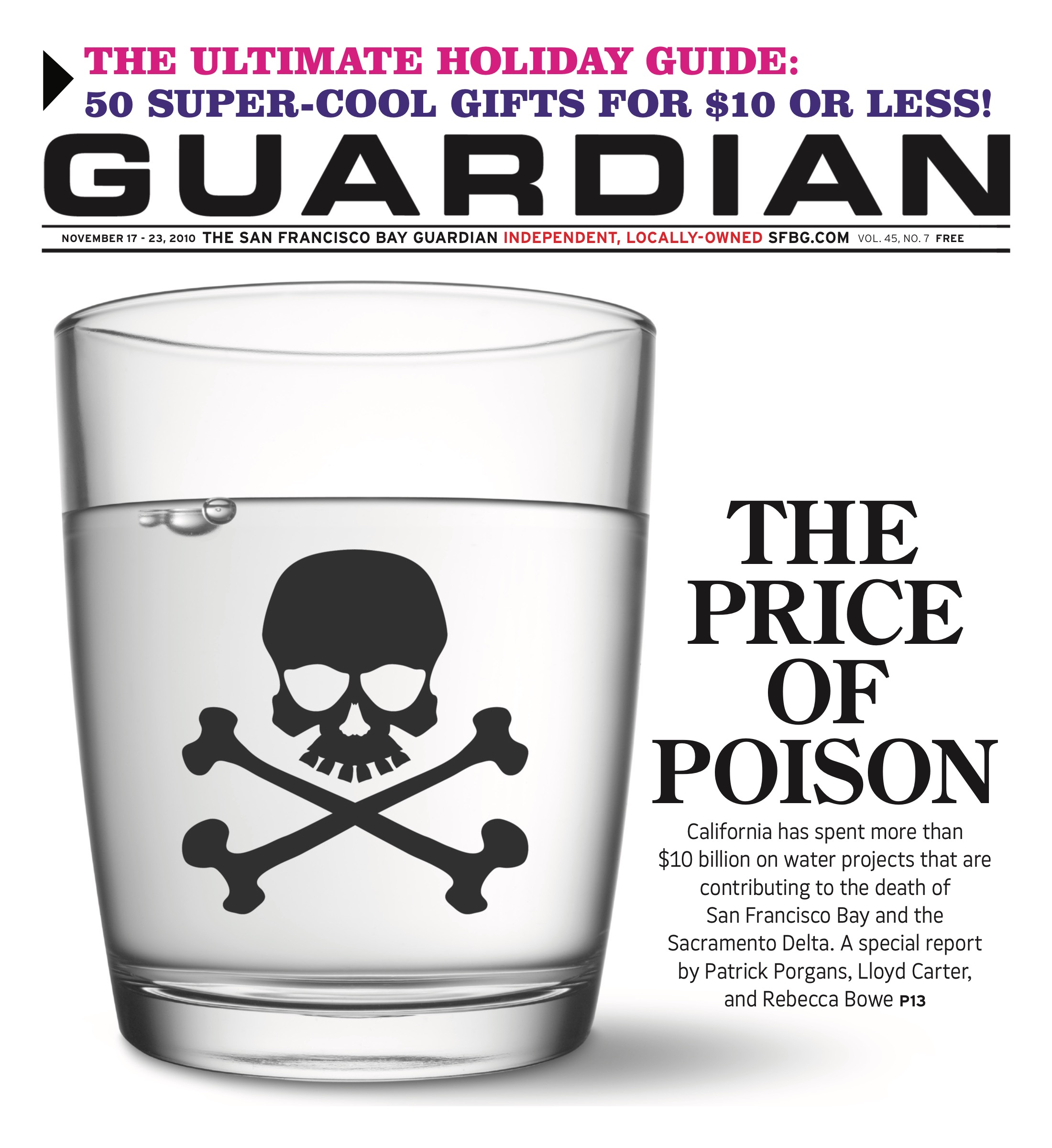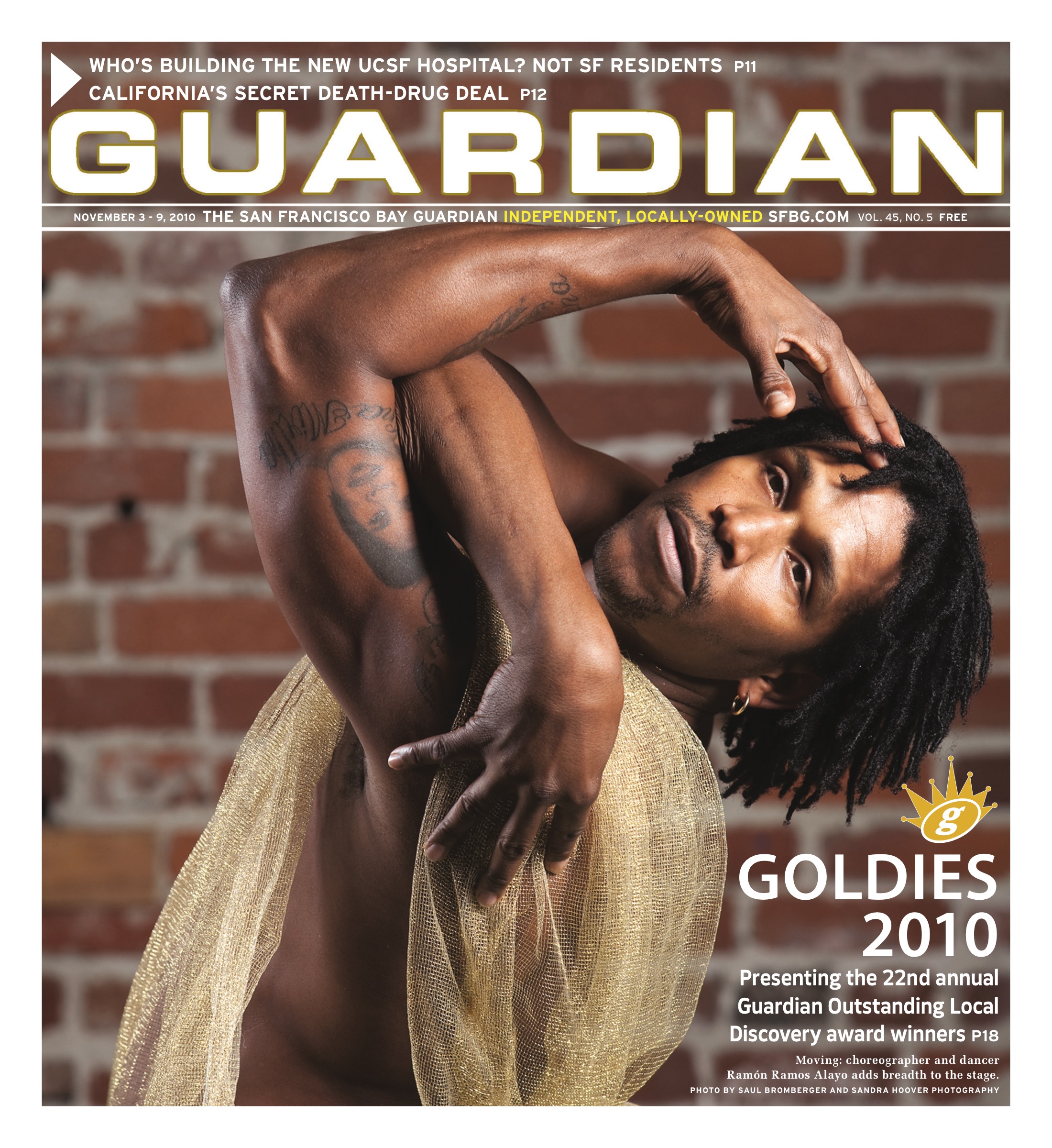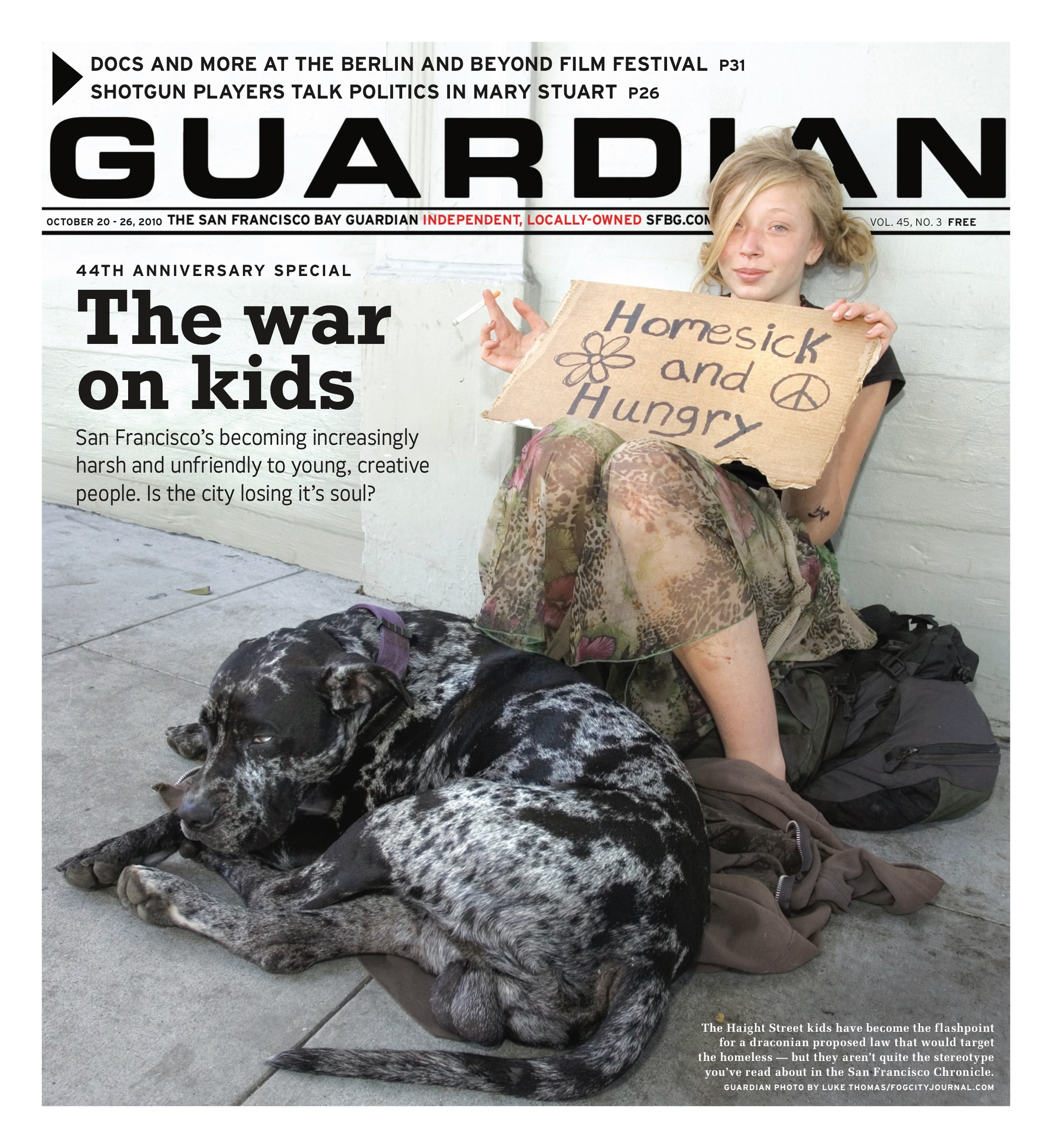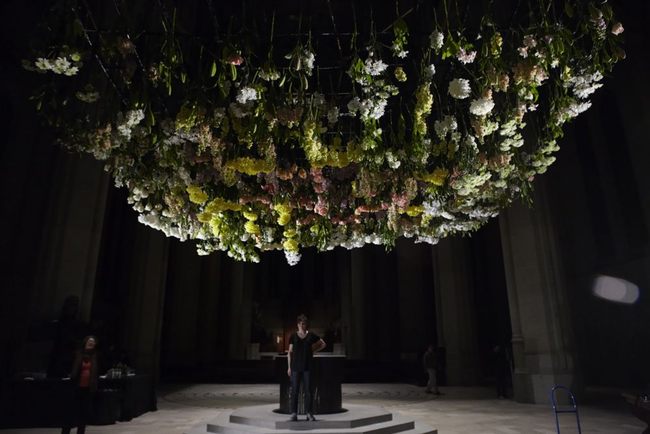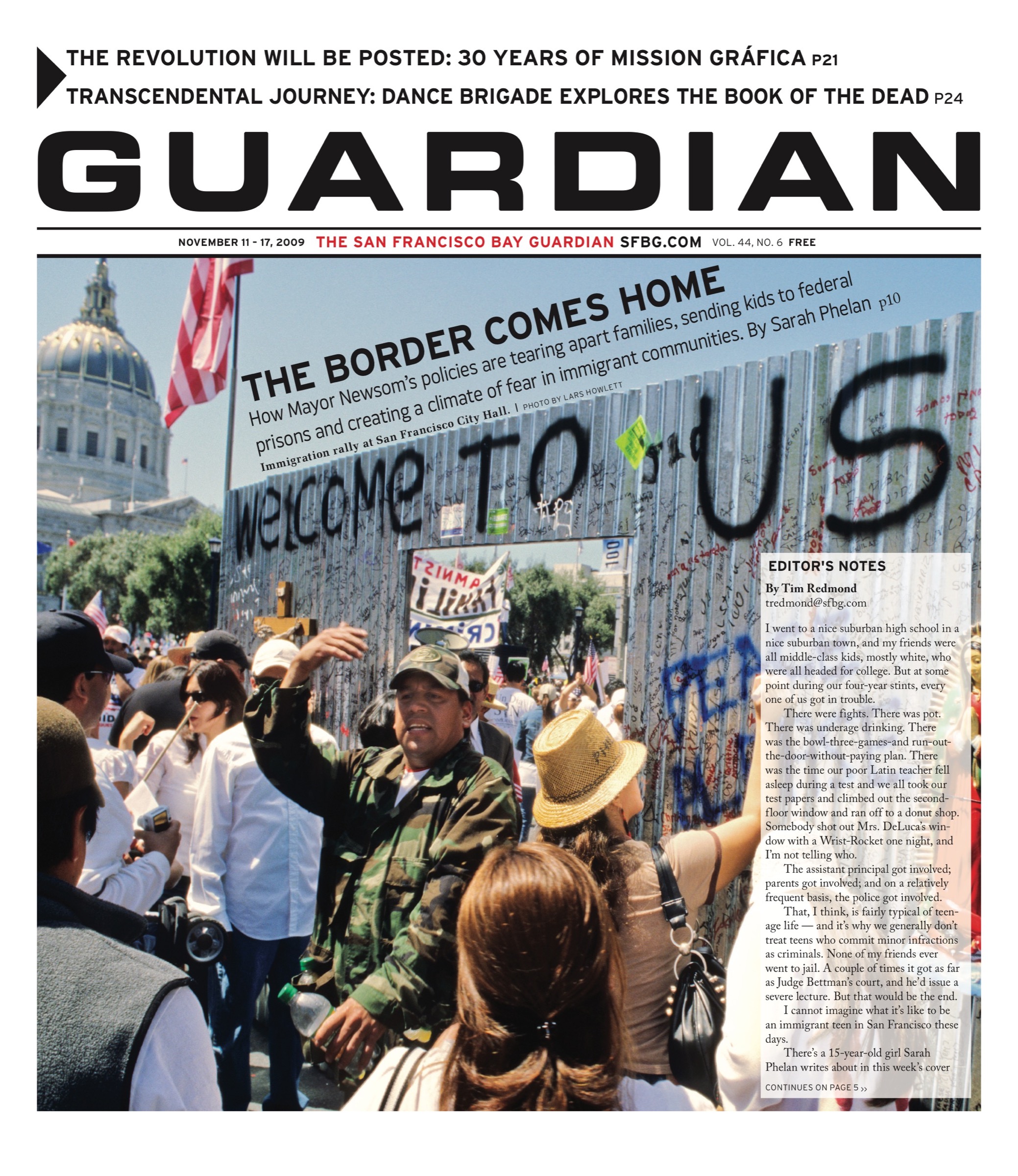arts@sfbg.com
MUSIC “This is where the heartbeat is. Does that sound cocky?” Shannon Shaw, bold-voiced singer and bassist from Oakland’s Shannon and the Clams, is cautious how she answers my question. She’s in a booth, finishing up her fries at Grubstake, just off of Polk Street. The eatery is my suggestion for a pre-performance chat about the band’s new album, Sleep Talk (1-2-3-4 Go! Records), slated for release April 5.
Amid the bustling dinner-time sounds of the restaurant, Cody Blanchard, the guitarist, eats something vegetarian, while Ian Amberson, the group’s drummer, opts for the more traditional caldo verde soup. In a few hours Shannon and the Clams is playing a show at the nearby Hemlock Tavern, along with openers Guantanamo Baywatch — a Portland, Ore., band they admire — and Uzi Rash.
The heartbeat Shaw refers to is the Bay Area and its seemingly tight-knit music scene. I’d asked if the group’s members if they thought their success could have been achieved anywhere, or if it’s something particular to their Oakland stomping grounds.
“The Bay Area is defined by its history of fun punk — stuff like the Mummies, the Trashwomen, and the Bobbyteens,” Cody says, in acknowledgment of our locale’s rich garage rock history. But as much as they’re influenced by the “weird and wild people” they consider like-minded allies, and the strange beauty of Oakland’s abandoned neighborhoods, Shannon and the Clams’ inspiration also comes from a place in the past, no less strange, sort of dark, yet innocent. Their music is the sound of teenage despair.
NOT QUITE QUEERCORE
I first encountered Shannon and the Clams live at Oakland’s Stork Club in early 2009. I’d seen their ridiculous name around before, but didn’t know what to expect. They’d been categorized as everything from queercore to surf punk to the downright nauseating term retro-billy. “I think the people feel a kinship with us,” Cody says, discussing the group’s fan base. “People become really comfortable letting their freak flag fly.”
Still, Cody doesn’t think some of the labels assigned to the band were the best fit. “I’d rather musical genres have more to do with sounds instead of politics, gender, and sexuality,” he explains, while acknowledging that it isn’t how things often work.
On that night two years ago, Shannon and the Clams turned out a solid performance that incorporated oldies elements such as late-1950s, early-1960s vocal styles and instrumental sounds. The group even covered Del Shannon’s “Runaway,” which was the moment of confirmation for me. I knew I was hooked and wanted more.
The group’s version of “Runaway” is a keeper, but Shannon and the Clams isn’t just recycling rock ‘n’ roll hits from a repressive American era when feelings were bottled up, not talked about. The group’s songs and sound possess an individual spirit and personality that ranges from playful to feral, calm (a clam anagram) to cuckoo. Both shine through on Sleep Talk, the follow-up to 2009’s I Wanna Go Home, also on 1-2-3-4 Go! Records. The new collection of songs was written and recorded in three weeks.
The Bay Area’s most recent wave of psych and garage bands draws from the acid-soaked late-1960s, with results that often come out drone-y, druggy, and dreamlike. But the Clams obviously take note of the less-altered dawn of that same decade, before psilocybin and its closely associated synthetic cousin became the remedy reaction of youth and counterculture. Melodramatic songs of angst and lost love were common.
Shannon, a self-described square-but-morbid kid, admits to loving Roy Orbison’s “Crying.” “Any teenager death ballad, I was all over,” she says. A tragic mood is conjured on Sleep Talk‘s “Half Rat,” where the incessantly repetitive lyric longs for a soul mate’s return. It’s almost like when a loved one dies and you dream about them being alive, only to be disappointed when you wake up to the heartbreaking reality that nothing will ever bring them back. It’s no wonder that without a release other than singing, so many of the voices from the past were compelled to do some amazing things.
THAT VOICE
Raspy and powerful, Shannon’s voice has become a signature trademark. She shreds words, wails, and lets loose with an extended growl on “Done With You.” Her vocal delivery is raw, real, and out of control — one of a kind. Her vocals are one reason that it’s misleading to tag Shannon and the Clams as simply retro — it’s hard to imagine a June Cleaver-type belting out songs in this fashion, though maybe someone like Wanda Jackson would be up for the task.
“I think it’s out-of-body,” Shannon, says when asked about singing. “I just sometimes feel kind of possessed on stage, or like I’m excreting odd toxins or something.” She notes that other dynamic vocalists like Tina Turner, James Brown, and Irma Thomas bring a similarly unique intensity to live performance.
Wanda Jackson is a queen of rock ‘n’ roll, but it was another Jackson who inspired Shannon to get up on stage sing in public for the first time, at a karaoke bar during her “lowest of lows.” She performed a ballad famously delivered by a little boy who, sadly, was adult ahead of his time. “I didn’t sing publicly at all till I started playing [music] around three years ago, and I just knew I really needed to sing “Ben” [by Michael Jackson], and I needed to sing it right away,” she explains. “I didn’t care about being self-conscious.” After being accepted by her “grizzled karaoke comrades,” she found the strength and confidence to perform her own songs.
Cody, the Clams’ co-songwriter, is also no slouch behind the mic. On Sleep Talk‘s “Old Man Winter,” he sounds brilliant doing his rockabilly best, exaggerating the whooping, keening sounds Buddy Holly could make with his voice. He’s pretty keen on the originality of vocalists Hasil Adkins, Joey Ramone, and Marc Bolan, preferring sound over lyrical content.
“Amazing singing is something that feels to the singer like a compulsion or a nervous tick, as if that singer can’t do anything to keep themselves from crying out,” he says. “They must do it or they’ll go nuts, and they just invent these bizarre sounds.”
WE JUST WANNA BE WEIRD
On the subject of songwriting, Cody uses vivid imagery to describe a T-Rex- that “kidnaps” him and takes him away to a “glittery, horny, spaced-out fantasy world.” I guess Clam nation can’t all be doom and gloom. Indeed, a typical Shannon and the Clams show finds the band in colorful costume, making inventive use of capes, fast-food outfits, and other assorted disguises. This past Halloween they even dressed as Devo for a night of cover songs.
Shannon and the Clams’ affinity for cartoons, jingles, and campy commercialism is apparent. On Sleep Talk‘s cover art, photographed by Keith Aguiar, Shannon and Cody are buried in what looks like a landfill of stuffed animal nostalgia and familiar characters. The imagery is indicative of their bubblegum side and love of Jim Henson’s Muppets. Cody points out that the people behind those Muppet tunes were pretty solid songwriters. On “The Cult Song,” listeners might even detect a vocal tribute to the Cookie Monster, if not Keith Moon circa “Boris the Spider.”
The name Joe Meek pops up more than once in conversation. “I love how Meek’s records sound, so inventive and strange,” Cody says, regarding the innovative Space Race-era producer behind “Telstar,” an instrumental No. 1 hit by the Tornados. “And he seemed totally nuts.”
Shannon and the Clams haven’t yet rocketed to the moon, but a trip to South by Southwest and a tour with Hunx and His Punx are part of their immediate travel plans. I ask what comes after that. “I feel like something [currently] brewing in Oakland is much weirder caveman-type music,” Shannon says, in anticipation of the scene’s next wave of creativity. “Can we just be weirdo, other rock ‘n’ roll?”
Cody is convinced that the dedication of the Bay Area music scene is unique and undying. “I can’t think of any other cities that are so enthusiastic about [music],” he says. “It just keeps coming. Waves of all kinds come and go.” If you think Shannon and the Clams are riding the wave for teenage kicks and landing in tragic territory, you’re partly right — and it’s working. Right now, with Sleep Talk, you’ve got a second dose.

